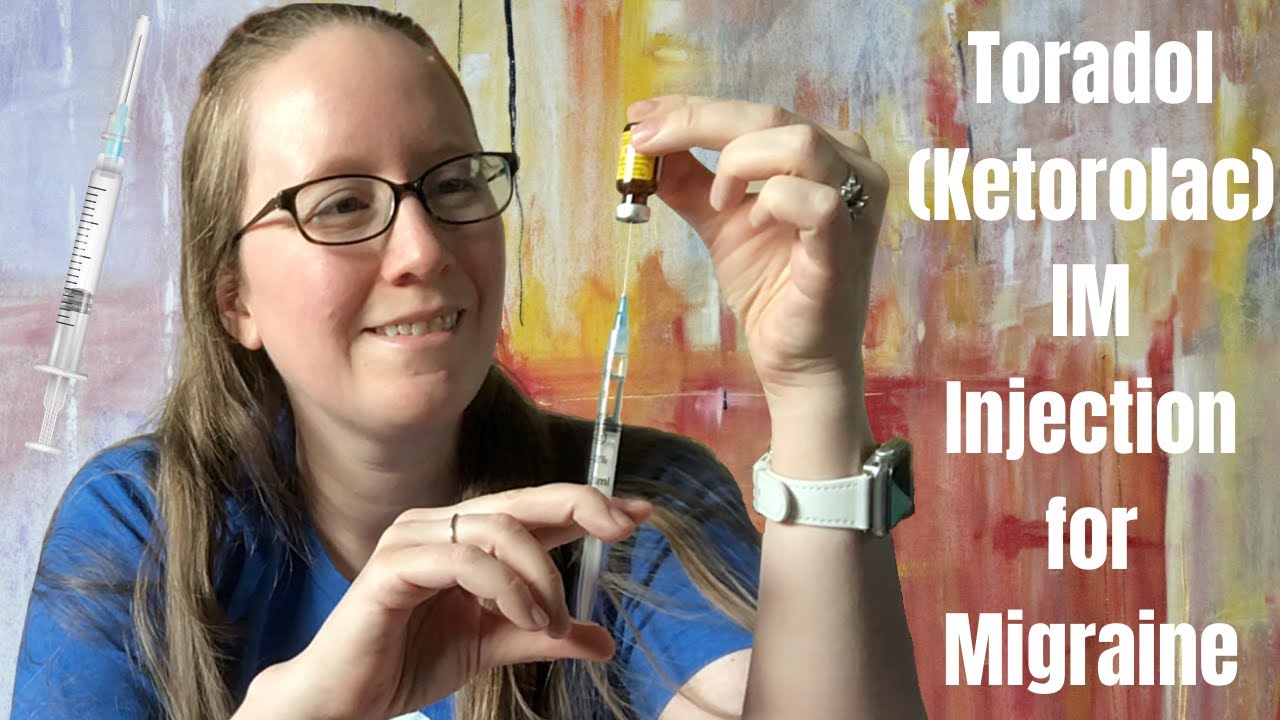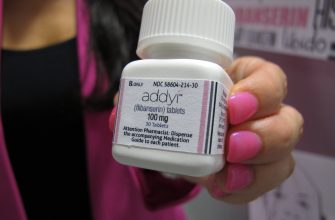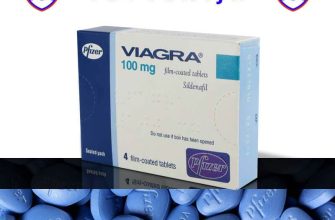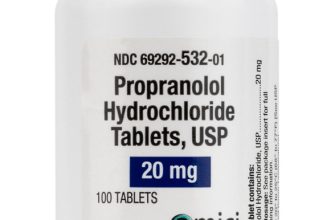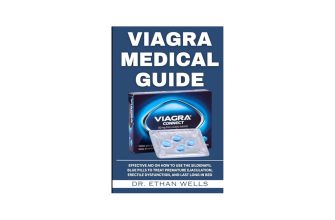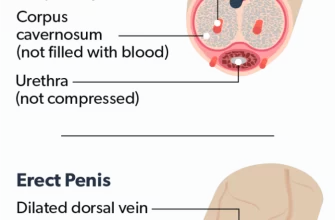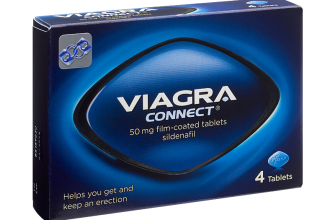For optimal Toradol intramuscular (IM) injection, target the ventrogluteal site. This muscle, located in the buttock, offers ample tissue for absorption and minimizes the risk of nerve damage.
Precisely, locate the ventrogluteal site by placing your hand on the greater trochanter (the bony prominence of the hip) with your fingers pointing towards the patient’s head. Then, place your index finger on the anterior superior iliac spine (the bony prominence of the pelvis). Your middle finger should naturally fall over the ventrogluteal area; this is your injection site.
Consider the patient’s age and body size when selecting the needle length. For adults, a 1-1.5 inch needle is usually sufficient. Always use a 25-gauge needle or finer to lessen discomfort and reduce potential tissue trauma. Aspirating before injection is a standard precaution to avoid inadvertent intravascular injection.
After administration, apply gentle pressure to the injection site to minimize bleeding and bruising. Instruct the patient to avoid strenuous activity for at least several hours following the injection. Monitor for any adverse reactions, including bleeding, swelling, or pain at the injection site. Report any concerning symptoms immediately to your healthcare provider.
- Toradol IM Injection Location: A Detailed Guide
- Understanding the Muscles Suitable for Toradol IM Injection
- Identifying the Ventrogluteal Muscle: Location and Landmarks
- Palpation Techniques
- Visualizing the Injection Site
- Step-by-Step Guide: Preparing for Toradol IM Injection
- Detailed Technique: Administering Toradol into the Ventrogluteal Muscle
- Preparing the Injection Site
- Administering the Injection
- Post-Injection Care
- Managing Potential Complications
- Alternative Injection Site: The Vastus Lateralis Muscle
- Locating the Vastus Lateralis
- Assessing the Injection Site for Complications
- Post-Injection Care and Monitoring for Adverse Effects
- When to Seek Medical Attention After Toradol IM Injection
Toradol IM Injection Location: A Detailed Guide
Administer Toradol IM injections into the ventrogluteal muscle. This site offers a large muscle mass minimizing the risk of nerve damage. Locate the ventrogluteal site by placing your hand on the greater trochanter (the bony prominence on the outside of the hip) and your index finger on the anterior superior iliac spine (the bony point at the front of the hip). Spread your fingers – the injection site lies in the center of the triangle formed by your fingers.
Alternatively, use the dorsogluteal site, although the ventrogluteal is preferred due to reduced risk of sciatic nerve injury. For the dorsogluteal site, locate the upper outer quadrant of the buttock. Avoid the superior medial quadrant to prevent injury to the sciatic nerve. Visualize a cross dividing the buttock into four quadrants. Select the upper outer quadrant.
Before injection, carefully aspirate to ensure you haven’t entered a blood vessel. Always follow aseptic techniques, employing proper hand hygiene and disinfection of the injection site. After injection, gently massage the area to aid absorption. Document the injection site and time of administration in the patient’s chart. Observe the patient for any adverse reactions. Different anatomical landmarks may exist in patients with differing body types, always exercise caution and use appropriate technique.
Remember: This guide provides general information. Always consult official guidelines and your institution’s protocols for specific injection procedures. Improper injection technique can cause significant complications. Proper training is crucial for safe administration.
Understanding the Muscles Suitable for Toradol IM Injection
The vastus lateralis is generally preferred for Toradol IM injections, especially in adults and older children. Its large size and relatively thick muscle mass minimize the risk of accidental intramuscular injection into a nerve or blood vessel.
The ventrogluteal muscle is another excellent choice, offering a similar safety profile. This muscle is located deep and away from major nerves and blood vessels, making it suitable for various medication types. However, precise injection technique is vital. Locate the injection site by palpating the greater trochanter of the femur and the anterior superior iliac spine.
For infants and young children, the dorsogluteal muscle should be avoided due to the proximity of the sciatic nerve. The vastus lateralis remains a safer alternative.
Careful consideration should be given to the patient’s age and physical development when selecting an injection site. Always follow established injection protocols and seek further guidance when uncertain.
| Muscle | Suitability | Considerations |
|---|---|---|
| Vastus Lateralis | Adults, children | Large muscle mass, relatively safe |
| Ventrogluteal | Adults | Requires precise anatomical knowledge |
| Dorsogluteal | Generally avoided for infants and young children | Proximity to sciatic nerve increases risk |
Identifying the Ventrogluteal Muscle: Location and Landmarks
Locate the greater trochanter of the femur; it’s the bony prominence on the outer side of your hip. Place your hand on the patient’s hip, with your thumb pointing towards the groin and your fingers pointing towards the patient’s head. Your index finger should rest along the anterior superior iliac spine (ASIS), the bony prominence at the front of the hip. Your middle finger should be positioned towards the posterior superior iliac spine (PSIS), easily palpable on the back of the hip. The area forming a triangle between your index and middle fingers is the ventrogluteal muscle. Aim for the center of this triangle for injection.
Palpation Techniques
Use your index and middle fingers to gently palpate the bony landmarks. Ensure you can clearly feel both the ASIS and the greater trochanter. The space between your fingers creates the injection site. Proper palpation minimizes the risk of accidental nerve or vessel damage. Consider using anatomical landmarks, not just a specific measurement, as body sizes and shapes vary.
Visualizing the Injection Site
Imagine a triangle with the ASIS, greater trochanter, and PSIS as its vertices. This helps create a visual reference for the injection location. The ventrogluteal muscle sits deep within this area. The injection site is in the center of the triangle created by your fingers. Remember always to use proper aseptic technique before injecting.
Step-by-Step Guide: Preparing for Toradol IM Injection
Gather your supplies: Toradol vial, appropriate size needle and syringe, alcohol swabs, gauze pads, sharps container, and gloves.
Check the Toradol vial: Verify the medication, expiration date, and clarity of the solution. Discard if cloudy or discolored.
Prepare the injection site: Select an appropriate intramuscular injection site (e.g., ventrogluteal or vastus lateralis). Cleanse the area with an alcohol swab using a circular motion, moving outward from the center.
Prepare the syringe: Draw up the prescribed dose of Toradol into the syringe. Remove any air bubbles.
Position the needle: Using the Z-track method, displace the skin and subcutaneous tissue laterally before inserting the needle at a 90-degree angle.
Administer the injection: Slowly inject the Toradol. Once complete, remove the needle while maintaining skin displacement.
Apply pressure: Apply gentle pressure to the injection site with a gauze pad. Do not massage.
Dispose of supplies: Properly dispose of the used needle and syringe in a sharps container.
Monitor the patient: Observe the patient for any adverse reactions. Document the injection time, location, and dose.
Detailed Technique: Administering Toradol into the Ventrogluteal Muscle
Locate the ventrogluteal site: Place the palm of your hand on the greater trochanter, your index finger on the anterior superior iliac spine, and your middle finger extended towards the buttock. The injection site is in the triangle formed by your index and middle fingers.
Preparing the Injection Site
Cleanse the area with an antiseptic swab using a circular motion, working outwards from the center. Allow the area to air dry completely. Don’t touch the cleansed area again.
Administering the Injection
Use a 22-25 gauge needle appropriate for the viscosity of Toradol. Pinch the skin taut at the injection site. Insert the needle at a 90-degree angle. Aspirate before injecting to check for inadvertent vascular puncture. If blood appears, withdraw the needle and select a different injection site. Slowly inject the medication. Withdraw the needle swiftly and smoothly. Apply gentle pressure to the injection site with a sterile gauze pad. Do not massage the area, as this can cause discomfort and bruising.
Post-Injection Care
Instruct the patient to avoid strenuous activity for at least a few hours following the injection. Monitor the patient for any adverse reactions, such as bleeding, swelling, or pain at the injection site. Document the administration, including the date, time, dosage, and injection site.
Managing Potential Complications
Bleeding: Apply direct pressure. Pain: Recommend over-the-counter analgesics. Severe pain or other significant reactions should prompt immediate medical attention.
Alternative Injection Site: The Vastus Lateralis Muscle
Consider the vastus lateralis muscle as a suitable alternative injection site for Toradol. This large muscle, located on the outer thigh, offers a significant advantage: ample space for comfortable injection.
Locating the Vastus Lateralis
To find it, palpate the outer thigh, roughly midway between the greater trochanter (hip bone) and the knee. The muscle is fleshy and easily identified. Avoid the bone and the kneecap.
Using the vastus lateralis minimizes the risk of accidental intravascular injection. This muscle’s thickness provides a protective barrier, reducing the chance of hitting a blood vessel. Always aspirate before injecting to confirm needle placement. Proper injection technique remains crucial regardless of the injection site.
Remember to rotate injection sites with subsequent administrations to prevent local irritation. This muscle provides a sizable area for multiple injections without causing discomfort or tissue damage. Patient comfort significantly increases with proper selection of site and technique.
Assessing the Injection Site for Complications
Immediately after Toradol injection, visually inspect the site. Look for any signs of bleeding or swelling. Gentle palpation can help detect any unusual firmness or tenderness.
Monitor the injection site for the following within the first 24 hours:
- Increased pain or tenderness at the injection site
- Redness, warmth, or swelling that extends beyond the immediate injection area
- Pus or other drainage from the site
- A noticeable lump or hard area developing under the skin
- Fever or chills
These symptoms may indicate an infection or other adverse reaction.
If any of these occur, contact your healthcare provider immediately. Early intervention is key to managing complications.
Keep the injection site clean and dry. Avoid rubbing or scratching the area. Avoid applying heat or ice to the area without medical advice.
- Clean the site with mild soap and water, if necessary.
- Pat the area dry gently with a clean cloth.
- Keep the area covered with a clean bandage only if instructed by your doctor.
Detailed documentation of any observed changes in the injection site is beneficial for your healthcare provider, so note the date and time of your observation, as well as any specific characteristics of the site such as color change, size of swelling and the type of drainage (if any).
Post-Injection Care and Monitoring for Adverse Effects
Apply gentle pressure to the injection site for at least 5 minutes to minimize bleeding and bruising. Avoid rubbing the area.
Monitor the injection site for the following over the next 24 hours:
- Redness
- Swelling
- Pain
- Warmth
- Hardening
Report any of these symptoms, especially if they worsen, to your doctor or healthcare provider immediately. Significant changes suggest a potential problem needing attention.
Keep the injection site clean and dry. Avoid applying heat or ice packs unless advised by your healthcare professional. Do not use any creams or ointments on the area unless your doctor instructs you to do so.
Pay close attention to your overall well-being. Report any unusual symptoms, such as:
- Nausea
- Vomiting
- Dizziness
- Headache
- Difficulty breathing
- Allergic reactions (rash, itching, swelling of face, lips, or tongue)
These could indicate an adverse reaction to Toradol requiring immediate medical attention. Prompt reporting facilitates quick intervention and helps prevent complications. Contact emergency services if you experience severe symptoms.
Follow your doctor’s specific instructions regarding post-injection care and medication usage. This information provides general guidance; individual needs may vary.
When to Seek Medical Attention After Toradol IM Injection
Contact your doctor or seek immediate medical attention if you experience any of the following after a Toradol IM injection:
Severe allergic reaction: This includes difficulty breathing, swelling of your face, lips, or throat, hives, or a rapid heartbeat. These symptoms require immediate emergency care.
Intense pain or swelling at the injection site: While some soreness is normal, severe pain, significant swelling, redness extending beyond the immediate injection area, or warmth at the site should be reported to your doctor.
Unusual bleeding or bruising: Excessive bleeding or bruising at the injection site, or unexpected bleeding elsewhere, warrants a call to your doctor.
Fever or chills: These symptoms may indicate an infection and require medical attention.
Persistent nausea or vomiting: If nausea or vomiting continues for an extended period after the injection, contact your healthcare provider.
Changes in vision or hearing: Any changes in your vision or hearing should be reported immediately.
Chest pain or shortness of breath: These are serious symptoms requiring immediate medical attention.
Headache accompanied by stiff neck, fever, or altered mental status: These may be signs of a serious infection like meningitis and require immediate medical assistance.
Prolonged or worsening pain: If the pain you intended Toradol to treat does not improve or worsens despite the injection, consult your doctor.
This information is for guidance only and does not replace professional medical advice. Always follow your doctor’s instructions and contact them with any concerns.

